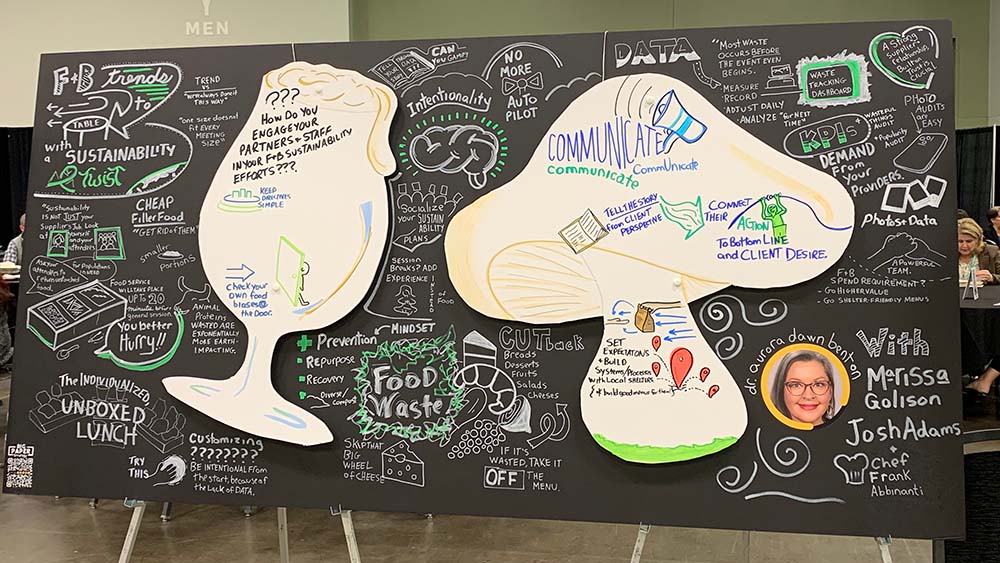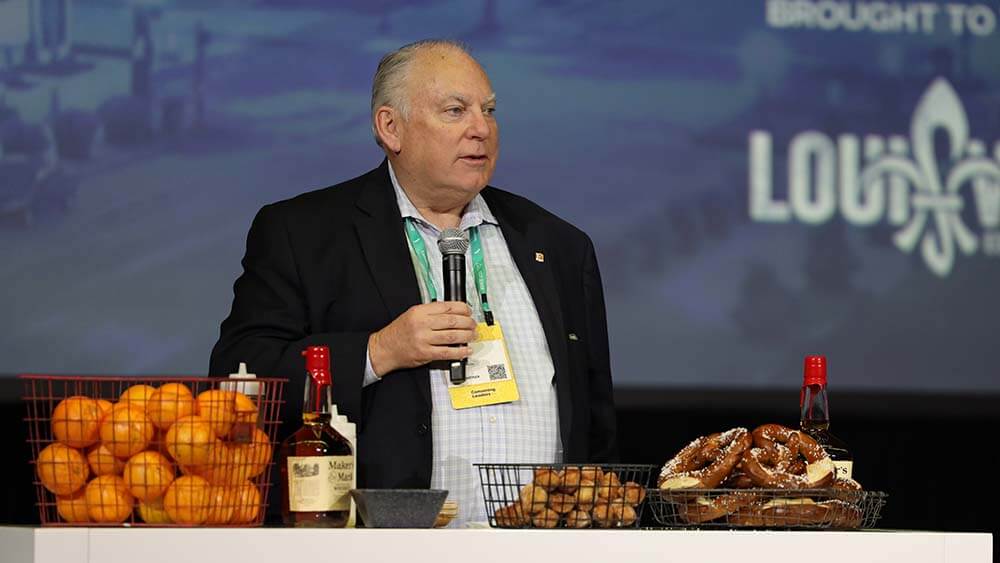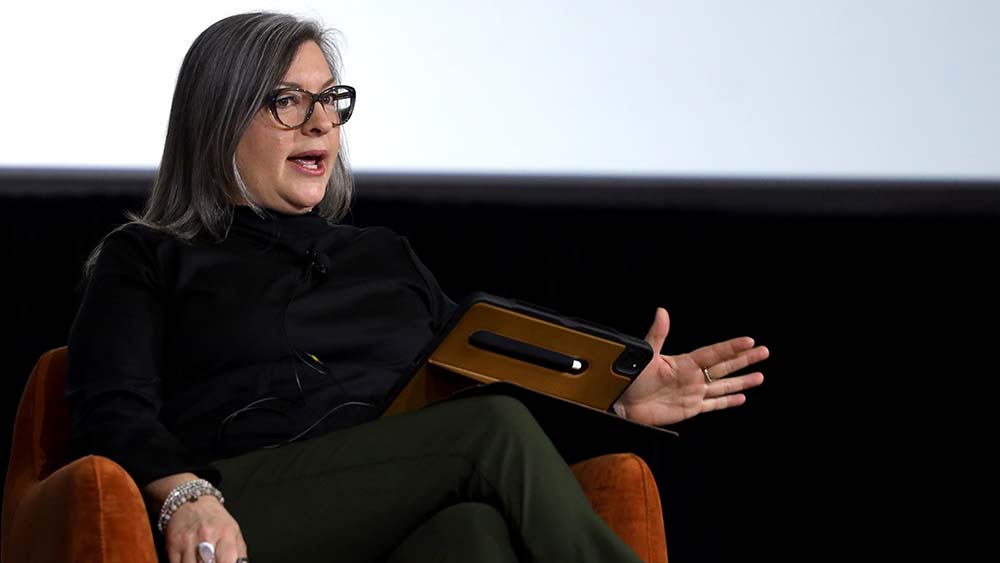
Matt Orley of Big Paper Strategy illustrated Tuesday’s session on food waste. Later at The District, attendees added to the illustration with their own ideas, answering the question, “How do you engage your partners and staff in your F&B sustainability efforts?” (Jennifer N. Dienst)
At Tuesday’s session, “F&B Trends to Table with a Sustainability Twist,” industry experts shared how planners can make their F&B programs more creative and less wasteful — a tall order but one that is achievable with the right mindset in place. Aurora Dawn Benton, Ph.D., who consults on sustainability management and practices as founder of Astrapto, emphasized that event professionals should rethink their sustainability processes from the very first step, and that recovery programs, like composting, are very important but a “prevention mindset” is key.
“Prevention is very difficult because it’s changing what you haven’t seen, it’s doing things in a new way,” she said. “It’s taking a little bit of risk and it’s innovating. It’s all about rethinking, and by doing that, you’ll be able to prevent food waste as well as capitalize on other trends in sustainability.” Below, a recap of six strategies discussed during the session.
1. Shift your mindset. And that goes for everyone in the event lifecycle — planners, suppliers, and attendees. Panelist Josh Adams, CMP, industry relations strategists at streamlinevents, said that planners “need to do some of the heavy lifting” and not leave it to their F&B providers to handle food waste and sustainability on their own. It’s also beneficial to set certain limits and expectations for attendees. For example, reconsider keeping buffets — a notorious culprit for food waste — open until the last minute for stragglers. “Why do we have full buffets for 10 people?” Adams asked. Instead, inform attendees that food service will close at a certain time. (Bonus: it will also keep your sessions from starting late, too.)

Doug Bennett, executive vice president of Louisville Tourism, stands behind treats made from upcycled pretzels and oranges, and other ingredients, during the session. (Whatever Media Group)
2. Upcycle when you can. Topped with Kentucky Bourbon-infused chocolate ganache and cinnamon sugar, the pretzel snacks set out during the session showcased how creative reuse can be relatively simple and elegant. The Levy culinary team used pretzels and oranges left over from Monday to make the sweet treat, chopping up the oversized pretzels into bite-sized pieces and using the orange peels for the candied orange garnish.
3. Volume does not equal value. Nix the cheap filler food from the menu. “Food should have a purpose,” said Benton. “It should have a purpose in how you get people to interact, it should have a purpose in how you get people to think.” Large platters and bowls of food — like cheese and charcuterie boards, for example — can be problematic because of how much is typically left uneaten in addition to the fact that they can be awkward and messy for attendees. Opt for smaller, individual-sized portions instead.
4. Data is power. “One of the greatest opportunities, and challenges, in the events space is data,” said Marissa Golison, director of sustainability for Compass Group USA, which launched an internal measurement tool, Waste Not, 2.0, in 2021 that has helped to reduce the company’s food waste by 33 percent. Adams advises planners to keep it simple when it comes to working with suppliers on tracking food waste. “Choose three or four things [to measure] that are important to you or to your association,” he said, emphasizing that tracking those same things year-over-year will offer a clearer picture of your event’s consistency with managing food waste.

Aurora Dawn Benton, founder of Astrapto, leads a conversation Tuesday about how planners can make their F&B programs more creative and less wasteful. (Whatever Media Group)
5. Design with intention. “Waste is usually created before the event starts,” said chef Frank Abbinanti, SVP of culinary for Levy Restaurants’ convention centers and cultural attractions division, who pointed out that sometimes menus are often just too big or diverse for the group. Understanding your group’s demographics and habits from the start, as well as being intentional about designing menus with purpose, can help prevent this. A small example — for a lunch reception, don’t waste money and materials on boxing up meals if attendees typically mingle and don’t take their lunch off site; instead opt a display with compostable utensils and serveware.
6. Customization can coexist with sustainability. According to Abbinanti, more than 70 percent of Levy’s menus are in some way customized. Take it a step further and give attendees the opportunity to DIY their meal, which can make managing dietary restrictions (and picky eaters) less of a challenge. One example is a build-a-bowl bar that offers a selection of proteins, grains, vegetables, and other ingredients — a solution that capitalizes on both customization and creative reuse.
Jennifer N. Dienst is senior editor at Convene
